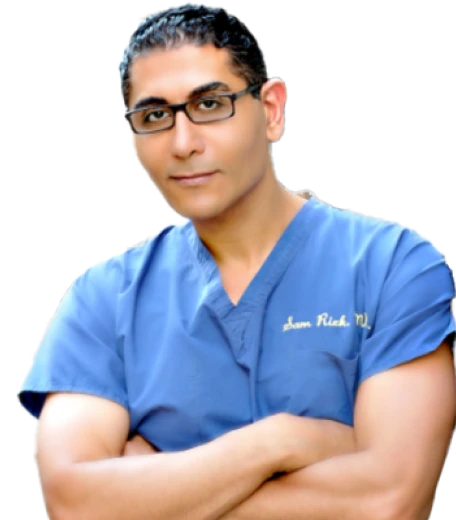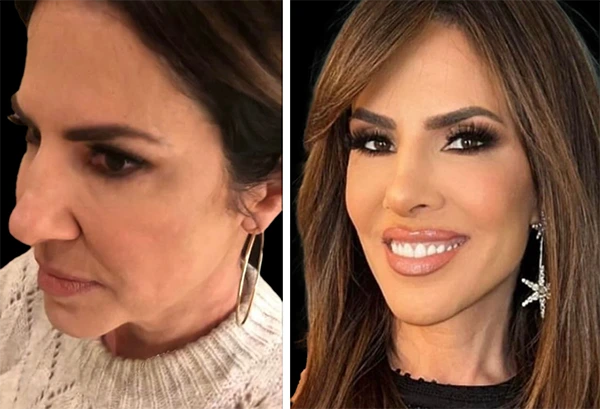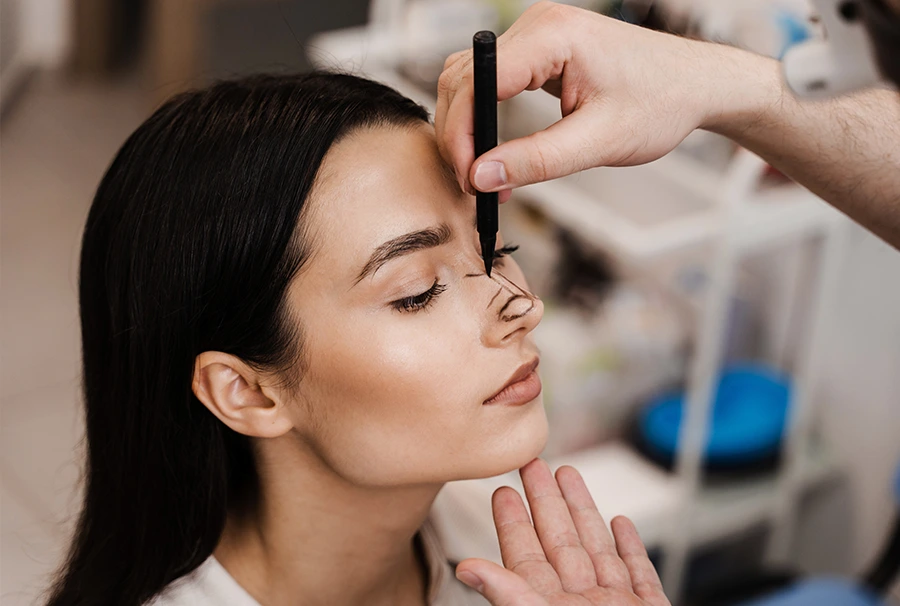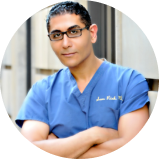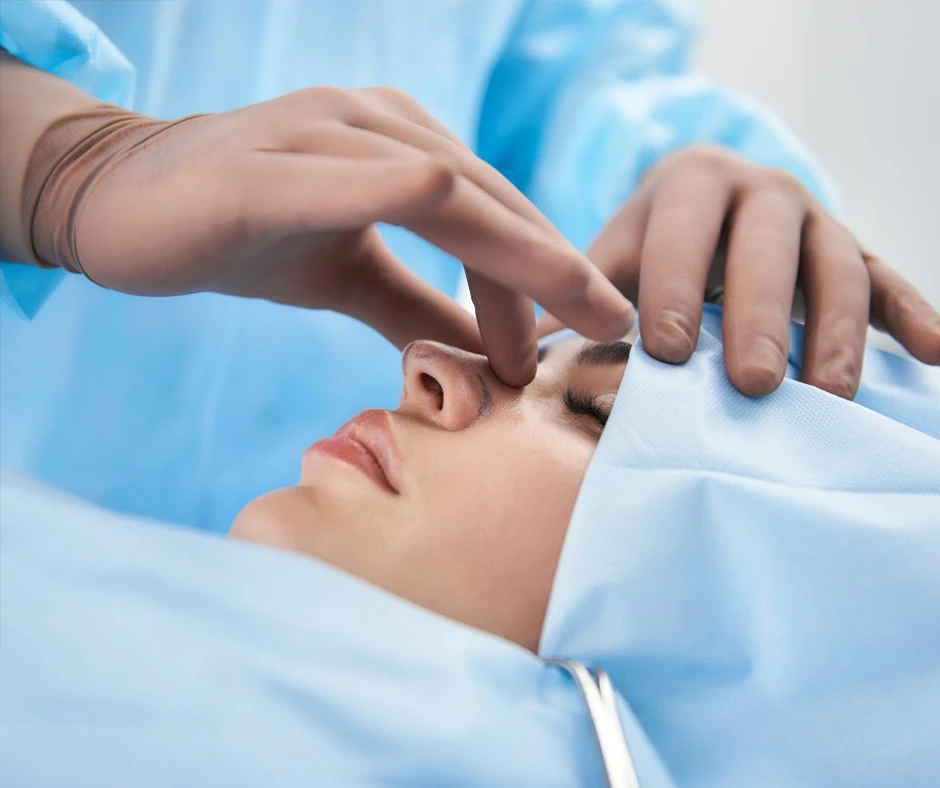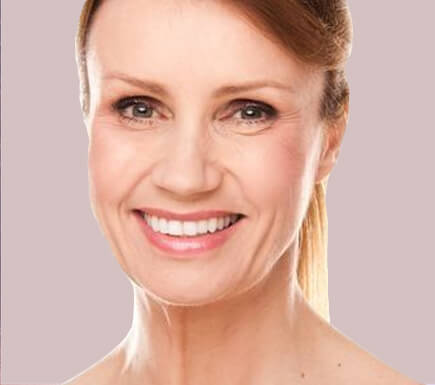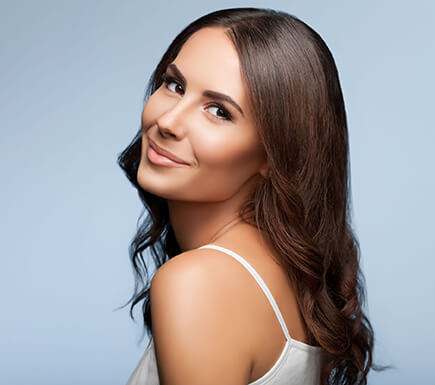The nose is the most prominent feature on the human face: even a small change will have a dramatic affect on a person’s appearance. According to the American Academy of Facial Plastic and Reconstructive Surgery (AAFPRS.org), in 2012, rhinoplasty was the most popular procedure performed on both men and women under the age of 35.
A Marriage of Form and Function
Every nose is unique since every face is different. Therefore an individualized approach is required to address each patient’s unique goals.
“My main mission with nasal surgery is to create a natural-looking nose that will stand the test of time, based on the structure of the cartilage and the overlying skin. A natural nose should be in harmony with the other features of the face, including the upper lip, chin, and cheeks. An important factor in achieving a natural result in rhinoplasty is to maintain good structural support.” – Sam Rizk, M.D., F.A.C.S. New York.
Your Expectations Versus Your Surgeon’s Vision
When consulting with a facial plastic surgeon, it is vital for potential patients to view before and after photos of the surgeon’s other patients. Photos not only show actual results, they also provide a sense of the surgeon’s vision and aesthetic. At his Manhattan Facial Plastic Surgery practice, Dr. Rizk offers patients the opportunity to view photographs, and upon request, to speak to other patients who have undergone a nose job procedure. Patients find this helpful to know what to expect before, during, and after the operation.
Ethnicity in Surgical Planning
Bone structure, skin type, age, and ethnic background all play an important role in determining the optimal surgical plan. Cultural differences should be respected in altering the size, shape, and characteristics of an individual’s nose.
In many cases, African-American, Middle Eastern/Mediterranean, Latino/Hispanic, and Asian patients may tend to have thicker skin that requires specialized techniques to re-sculpt the nasal tip. Rather than the cartilage-excising techniques used on individuals with thin skin, these patients often require more skill and expertise.
It is not uncommon to see cases where the nasal tip is quite bulbous or there is a lack of support. Having thicker skin with very little cartilage support, or where the cartilage is weak, creates a more complex operation. These types of rhinoplasties often require cartilage grafts from the patient’s own septum or from behind the ears, as well as de-fatting the thick skin to achieve good definition.
Dr. Sam Rizk employs both the open (external) and closed (endonasal) surgical techniques to reshape the nose. The overriding goal is to create a natural looking and aesthetically pleasing facial improvement that is tailored to the specific patient’s needs.
A 3D High-Definition Approach
At his New York practice, Dr. Rizk has mastered a 3D high-definition technique, which increases surgical precision and minimizes trauma. Instead of rasping over soft tissue, muscle, and blood vessels, which increases bruising, he carefully reduces cartilage and bone using advanced visualization with a high-definition 3D telescope system.
In addition, although older rhinoplasty techniques may have yielded nicely shaped noses initially, as cartilage grafts were resorbed and shifted over time, the results became less apparent and, in some cases, the airways collapsed. To yield better results with greater longevity, Dr. Rizk routinely employs the use of suture reshaping techniques for cartilage sculpting. By employing a micro powered diamond machine to soften and refine the edges of all of his cartilage grafts, he can achieve a more finessed result.
Finally, Dr. Rizk has moved away from using nasal packing in favor of using only tissue glue to ensure a faster and more comfortable recovery—an obvious benefit to his patients.
Considering Functional Components
In performing revision rhinoplasty, it is not only about getting a good cosmetic result—there is an important functional component to consider as well. Many patients coming in for revision nose jobs also have significant deformities that affect breathing. Their noses may have collapsed after previous surgeries.
In revision surgery, it is even more likely that both the functional and the cosmetic issues need to be addressed. The surgeon must keep an open mind and adapt the techniques and instruments used in order to achieve a superior result in each case.
Achieve Facial Harmony With Dr. Rizk
What are the characteristics of a well-balanced, natural-looking nose? A natural nose also must fit harmoniously with the rest of the face, and in particular, the chin angle and projection. The nostrils should not appear to be pinched or collapsed. Although there are certain standards for the size of the nose in relation to the face and eyes, rhinoplasty presents a combination of science with artistry. In the end, to achieve optimal results means selecting the right technique for the right patient.
Schedule Your NYC Rhinoplasty Consultation Today
Each surgery performed by Dr. Rizk is customized to be in harmony with the individual patient’s face to complement his or her other features. Call (212)-452 3362 for a booking.

